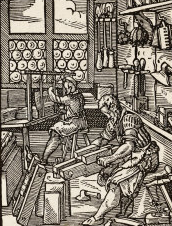Savante passion
Keywords:
Science, Moderne, Pathos, Carnet, Poétique, Roger North, PhilosophieAbstract
Dans l'Europe moderne, la « vérité-d'après-nature » est l'objectif des atlas savants qui cherchent l'universel dans des taxons. Le pathos n'a donc pas droit de cité au sein de cette culture du logos qui le frappe d'interdit épistémique. Pourtant, les passions refoulées du chercheur survivent et se manifestent dans les nombreuses traces graphiques qui jonchent ses notes privées. En suivant ces indices dans les carnets de mécanique de Roger North, juriste anglais du tournant du XVIIIème siècle et versé dans la philosophie naturelle, nous nous proposons de tracer le jeu des passions savantes. Ces espaces de papier sans loi ni géométrie nous révèleront alors les désirs, les plaisirs mais aussi les peurs et les hésitations du philosophe à l'œuvre. Un savoir pathique se dessine, produit d'une raison mue par les passions, un véritable « gai savoir inquiet ». À mi-chemin entre art et science, nous tentons ici d'esquisser les linéaments d'une poétique de l'enquête savante à l'époque moderne.
Learned Passion
In Early Modern Europe, "truth-to-nature" is the objective of savant atlases which seek the universal in taxons. Pathos is therefore not tolerated within this culture of logos which strongly forbids it on epistemological grounds. However, the scholar's repressed passions survive and manifest themselves in the numerous graphic traces scattered across his or her private notes. Following these clues in the mechanical notebooks of Roger North, an English jurist of the turn of the 18th century well-versed in natural philosophy, I propose to trace the interplay of savant passions. These paper spaces, void of laws and geometry, reveal the desires and pleasures but also the fears and hesitations of the philosopher at work. A pathic knowledge takes shape, figment of a reason moved by passions, a genuine "anxious gay science". Halfway between art and science, I try to sketch here the lineaments of a poetics of Early Modern savant enquiry.
Published
Issue
Section
License
- Work submitted for publication must be original, previously unpublished, and not under consideration for publication elsewhere. If previously published figures, tables, or parts of text are to be included, the copyright-holder's permission must have been obtained prior to submission.
- Authors of accepted manuscripts will assign to L'Atelier the right to electronically distribute their article, or publish it in any form (Internet, CD ROM, printed copy) but authors will retain copyright and, after the article has appeared in L'Atelier, authors may republish their text (in print and/or electronic form) as long as they clearly acknowledge L'Atelier as the original publisher.


